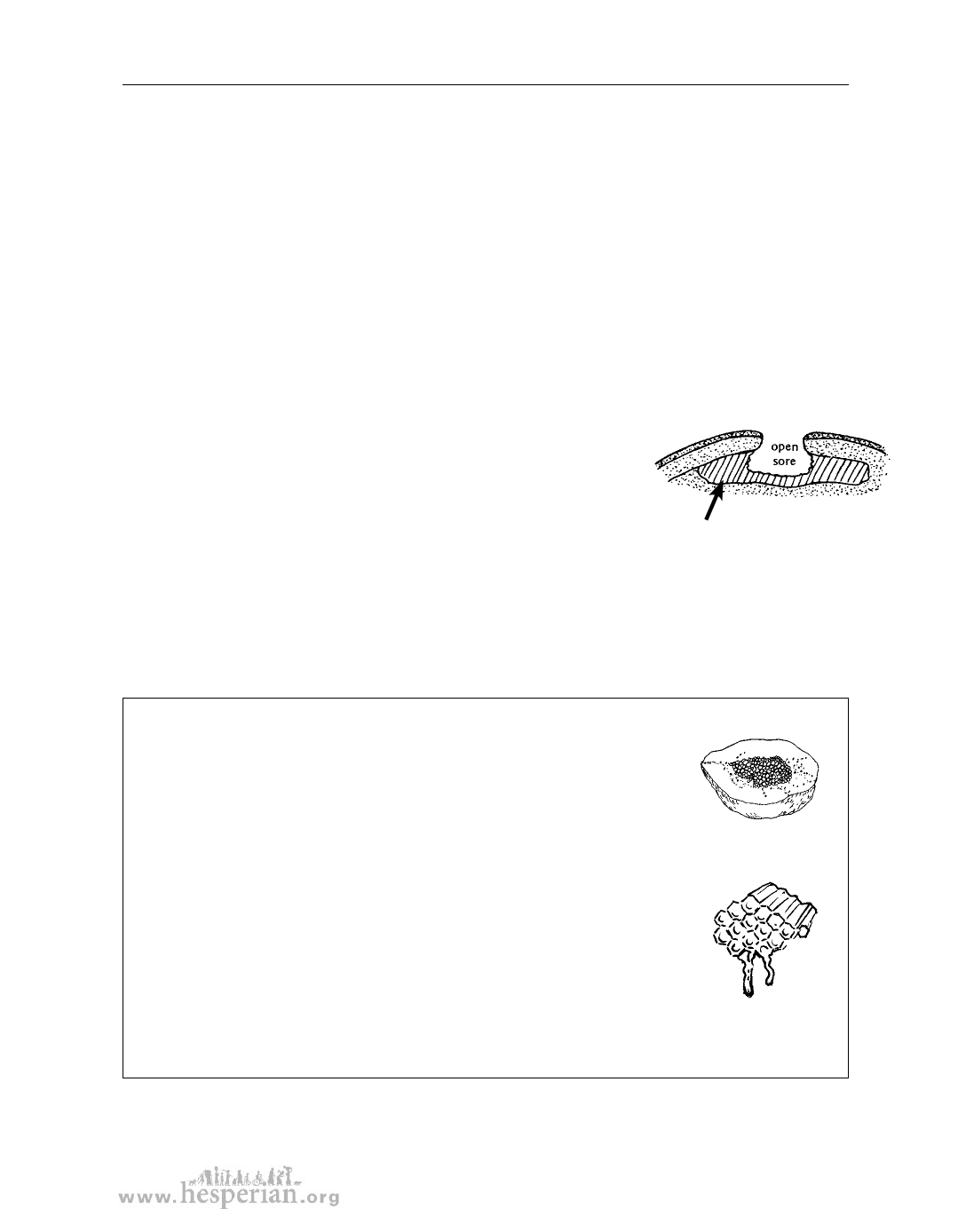
Pressure sores 115
If you have a pressure sore:
• Keep all pressure off the sore area. Do not sit or lie on the sore at any time.
• Gently wash the sore and the surrounding skin twice a day, with clean or
boiled and cooled water. Wash around the edge of the sore first. Then use a
new piece of clean cloth or gauze to wash from the center out to the edges.
• After cleaning, spread some ointment on a clean cloth or piece of gauze, and
cover the sore lightly. You can use any mild ointment, such as antibiotic cream
or petroleum jelly (Vaseline). This will prevent the skin from becoming dry and
will also protect the sore from dust, dirt, flies and other insects.
• Be careful not to rub or massage the skin around the pressure sore. This can
weaken the skin or tear it and make the sore worse.
If the sore is deep and has a lot of dead flesh:
• The sore needs to be cleaned 3 times a day.
• The sore is often bigger than it looks. It can go deep
under the edges of the skin. When the sore is cleaned,
be careful to take out more of the dead flesh. Little by
little, the dead flesh must be removed until the healthy
red flesh or bone is visible.
Dead flesh may be gray, black,
greenish, or yellowish and may
have a bad smell if infected.
• Wash the sore with soap and water every time dead flesh
is cleaned away. Use liquid surgical soap if it is available. Afterward, rinse the
sore with clean or boiled and cooled water.
Home treatments for pressure sores
Papaya (paw paw): This fruit contains chemicals that help
make the old flesh in a pressure sore soft and easy to
remove. Soak a sterile cloth or piece of gauze in the ‘milk’
that comes from the trunk or green fruit of a papaya plant.
Pack this into the sore. Repeat this 3 times a day.
Honey and sugar: These will kill germs, help prevent
infection, and speed healing. Mix honey and sugar together
into a thick paste. Press this deep into the sore, and cover with
a thick, clean cloth or gauze bandage. (Molasses or thin pieces
of raw sugar can also be used.) Clean out and refill the sore at
least 2 times a day. If the honey and sugar becomes too filled
with liquid from the sore, it will feed germs rather than kill them.
A Health Handbook for Women with Disabilities 2007